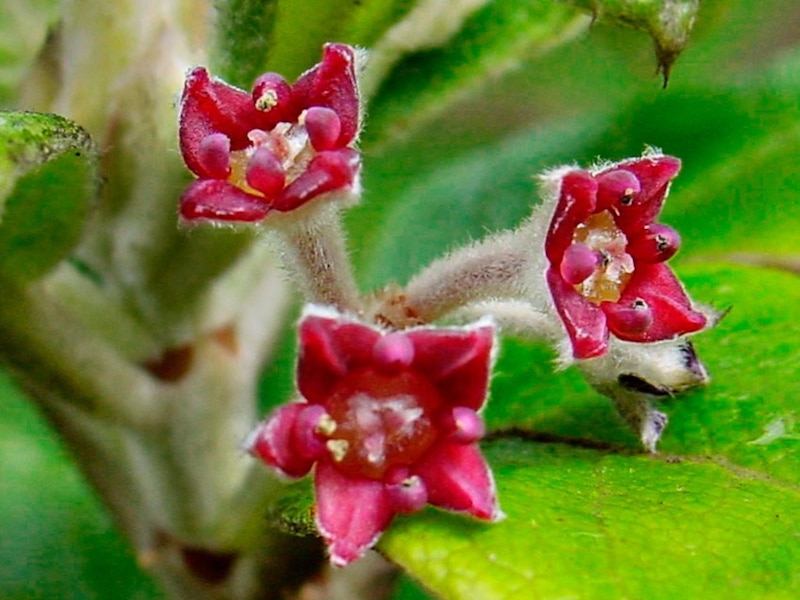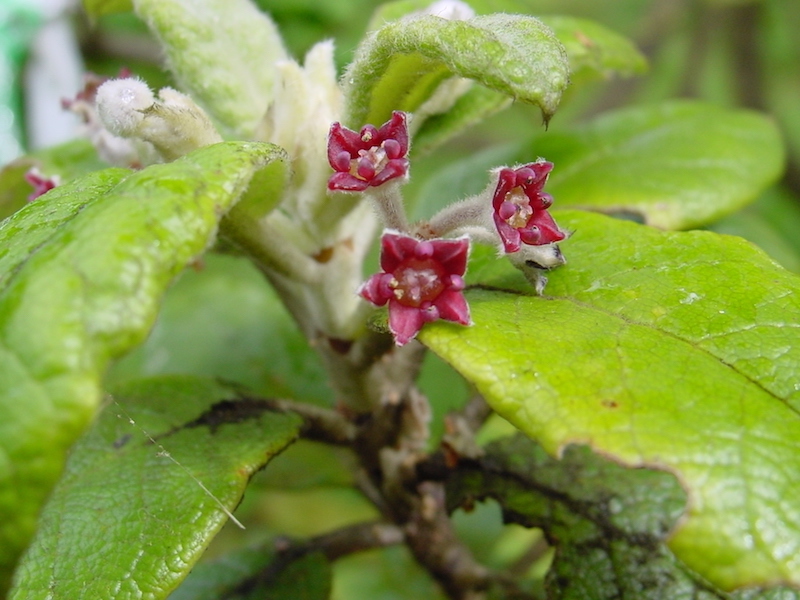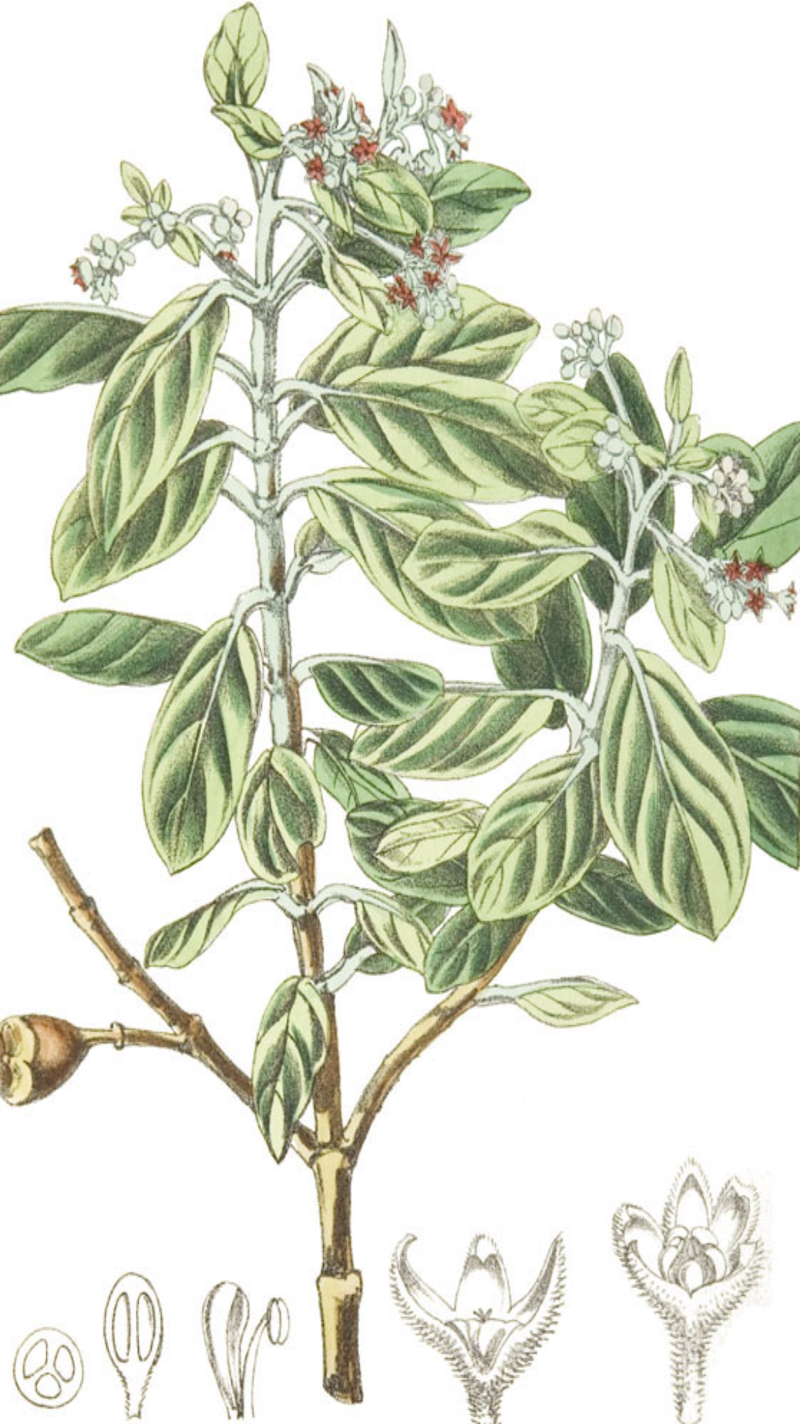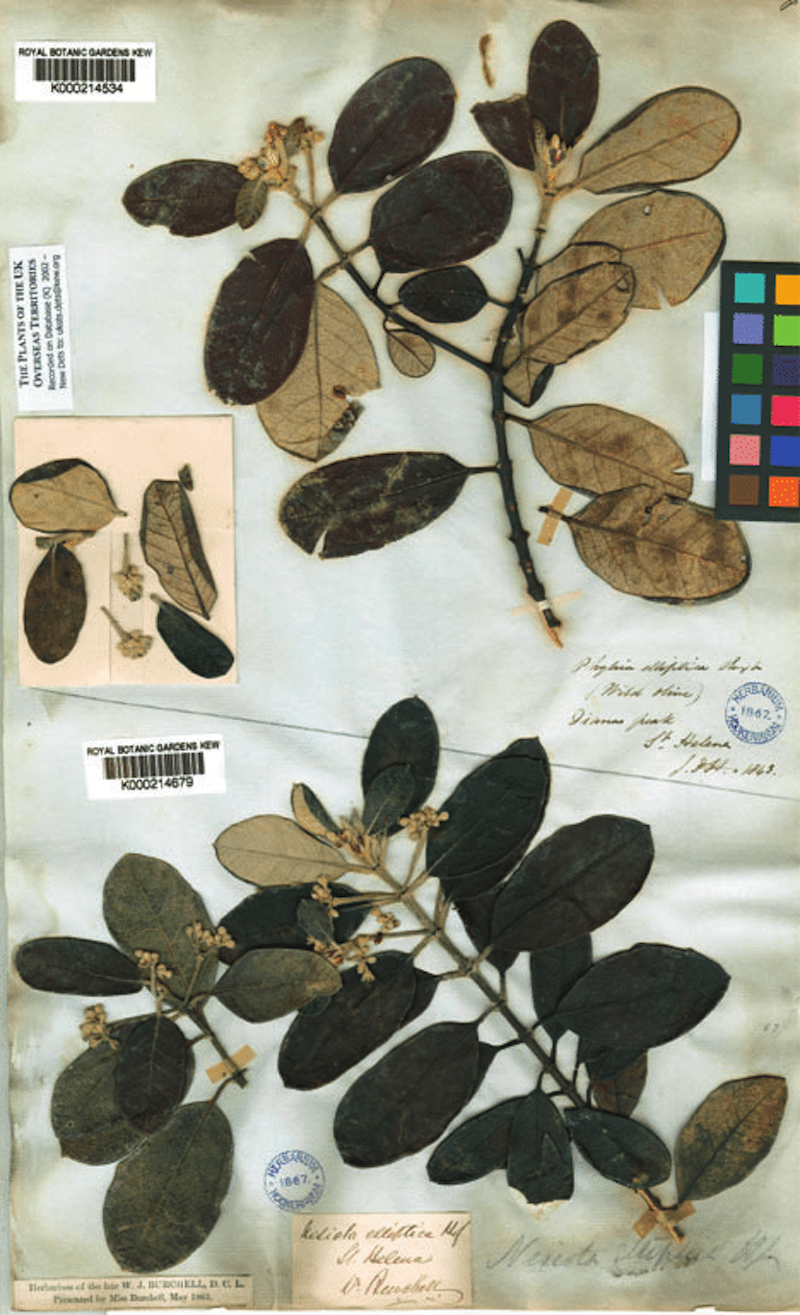



The Saint Helena olive (Nesiota elliptica) is an extinct species of flowering plant. It is the only member of the genus Nesiota. It was endemic to the island of Saint Helena in the South Atlantic Ocean.
The last remaining tree in the wild died in 1994, and the last remaining individual in cultivation died in December 2003, despite conservation efforts.
The Saint Helena olive was already rare by the 19th century due to deforestation and grazing by introduced goats, and was previously thought to be extinct until a single living specimen was discovered in 1977. It was highly self-incompatible, meaning that most seeds produced with itself or close relatives would fail, making it extremely difficult to grow seedlings, given that the population size for the plant had probably always been low. Despite immense effort, only a single cutting of the plant was able to be cultivated, with a handful of seedlings grown from it. The original wild plant died in 1994, making the species extinct in the wild. The final known specimen in cultivation, a seedling of the cutting, which had been the only surviving plant since 1999, died in 2003 from fungus and termite infestation, making the species totally extinct.[2] A sample of DNA from the Saint Helena Olive is stored at Kew Gardens DNA bank.[3] The Saint Helena Olive is one of a number of plant species to have gone extinct on Saint Helena since the arrival of the Portuguese in 1502, including Trochetiopsis melanoxylon, Acalypha rubrinervis, Wahlenbergia roxburghii, and Heliotropium pannifolium, with Lachanodes arborea and Trochetiopsis erythroxylon also extinct in the wild.[4]
More info about the Saint Helen Olive can be found here.




